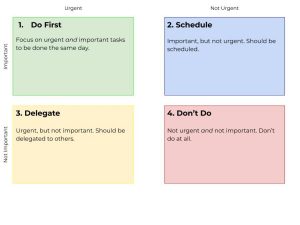— October 3, 2018

Unexpected expenses can be crippling. According to a recent report, only 39 percent of Americans say they would be able to pay for a $ 1,000 unplanned expense.
Inevitably this financial stress hits the workplace, making the employer collateral damage. According to the world’s largest human resources consulting firm, Mercer, “Improving employees’ financial wellness can lead to healthier employees, reduce absenteeism and lower turnover rates while raising employee satisfaction and improving the employer’s brand.”
50% of Your Workplace is Financially Stressed
The uncertainty of living on very limited funds can lead to financial issues that snowball into permanent problems. As of 2017, nearly 8 out of 10 American workers say they live paycheck-to-paycheck.
For many, this creates an enduring state of financial anxiety that seeps into the workplace. In fact, half of full-time American workers worry about their finances during work hours.
Not only does this stress cause a huge drag on productivity and engagement, but employees who are financially troubled are also twice as likely to have health issues as those who declare themselves, “financially fit.”
Employees Need a Solution
What can individuals do to achieve financial wellness? Slashing expenses, focusing on needs versus wants, and maintaining a cautiously comfortable standard of living certainly helps.
However, this doesn’t necessarily equal financial wellness – it takes time to accumulate wealth and achieve a state of financial security.
According to the 2017 Financial Mindset® Study, employees view financial health as very important to their overall well-being. However, they also rate it lowest in terms of how well they’re doing. The good news is that the workforce is looking for help—especially from their employers—on how to optimally manage their finances.
Building Progressive Financial Wellness Employee Benefit Programs
Providing financial wellness training and tools is a workplace trend that continues to grow. Today’s HR and business stakeholders are taking notice and including these in their benefit wheelhouse.
“We are seeing a big jump in the number of companies saying they intend to offer financial wellness support to their employees,” said Carla Dearing, CEO of SUM180, an online financial wellness service in Louisville, KY. “For those employers that ‘get it right,’ financial wellness has tremendous potential to drive engagement and retention.”
So, how can organizations step up? First, find out what your employees need from a financial wellness program by talking with them and even extending a company-wide survey or town hall/fireside chat. This will vary based on the employee group you’re targeting within your organization. For example, Millennials might be more focused on paying off student loans, while Baby Boomers are preparing for retirement.
Although priorities may vary, your program should ultimately put your employees in the driver’s seat for their current and future financial well-being.
Safeguard Your Employees with Identity Protection
When employers traditionally think of financial wellness programs, most consider debt management, retirement planning, and budgeting tools, to name a few. But there is one facet of financial wellness progressive employers are shining a light on: identity theft protection. These organizations have recognized that a critical part of a complete and sound financial security picture should be protecting employees’ identities.
With two new victims every second and fraudsters succeeding in stealing $ 16.8 billion from U.S. consumers last year, there’s no better time to evaluate protecting your employees, your customers, partners, family – essentially all those you care about.
An identity theft or fraud incident also diminishes workplace productivity. Employees spend more than 16 hours on average resolving an incident, typically during hours they would otherwise be working.
Additionally, the financial impact of an identity crime can be devastating. The average out-of-pocket loss is $ 2,895. If you recall, only 39 percent of Americans can cover $ 1,000 of unexpected expenses.
By offering identity theft protection as part of a financial wellness program, you’re not only protecting your employees, you’re able to further attract and retain top talent. Read more about this important employee benefit in IdentityForce’s 2018 Benefit Broker Survey.
Business & Finance Articles on Business 2 Community
(74)







